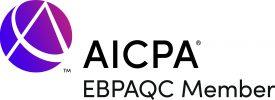
The independent auditor’s objective and responsibility, under generally accepted auditing standards (GAAS), is to express an opinion on whether the financial statements are fairly presented in conformity with generally accepted accounting principles, and that the related supplemental information is presented fairly, in all material respects, when considered in conjunction with the financial statements taken as a whole.
Although the audit requirement in ERISA is an important part of the total process designed to protect plan participants, a GAAS audit is not in and of itself designed to ensure compliance with ERISA’s provisions.
Under the law, plan administrators, the IRS, and the DOL have the responsibility to ensure such compliance. An ERISA audit includes an additional responsibility to perform testing of the participant records to ensure that participant records are accurately prepared in accordance with the plan document and provisions of ERISA.
We are diligent in our understanding of the additional professional requirements of an ERISA audit. These additional procedures are designed with the plan participants in mind:
- Are all eligible participants participating in the Plan?
- Are all participant deferrals properly and timely deposited into the participants' accounts?
- Has the employer matching contribution been properly calculated and deposited into the participant’s account in accordance with the Plan Document?
- Has the participant’s account been properly credited with their share of investment earnings?
- Is the participant’s account invested in the investment options chosen by the plan participant?
- Have plan distributions been made in accordance with the plan document and IRS rules and regulations?
- In calculating a defined benefit plan distribution benefit, has the participant been credited with the proper amount of accumulated eligibility credits?
- Do the medical benefit claims paid by the medical provider match the amount paid by the plan?
- Have co-pays, co-insurance, and deductibles been accurately calculated?
Our employee benefits practice consists of both Taft Hartley and Single Sponsored plans and includes the following types of plans:
- Defined Benefit Pension Plans
- ESOPs
- Health and Welfare
- Vacation Plans
- Payroll Audits in a Multi-Employer Plan Environment
We also provide Form 5500 preparation services to employee benefit plans.

